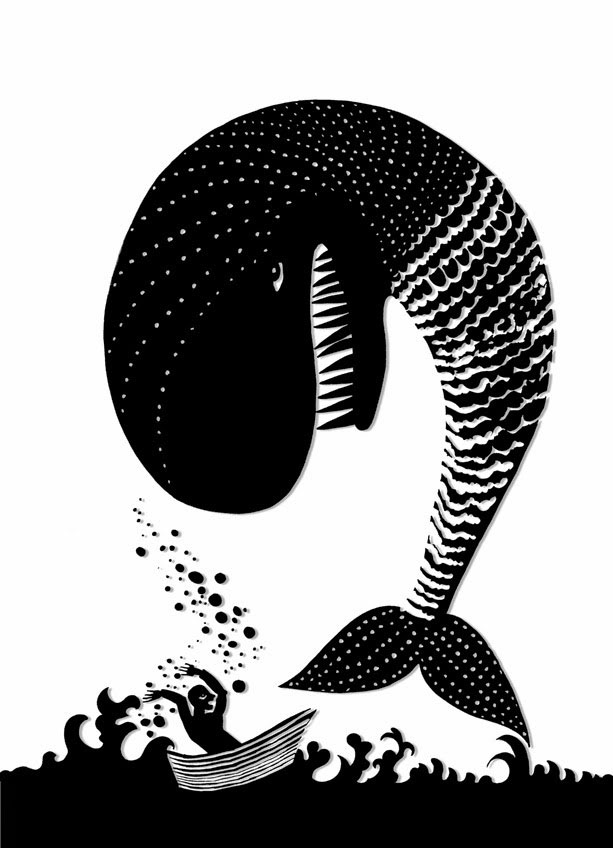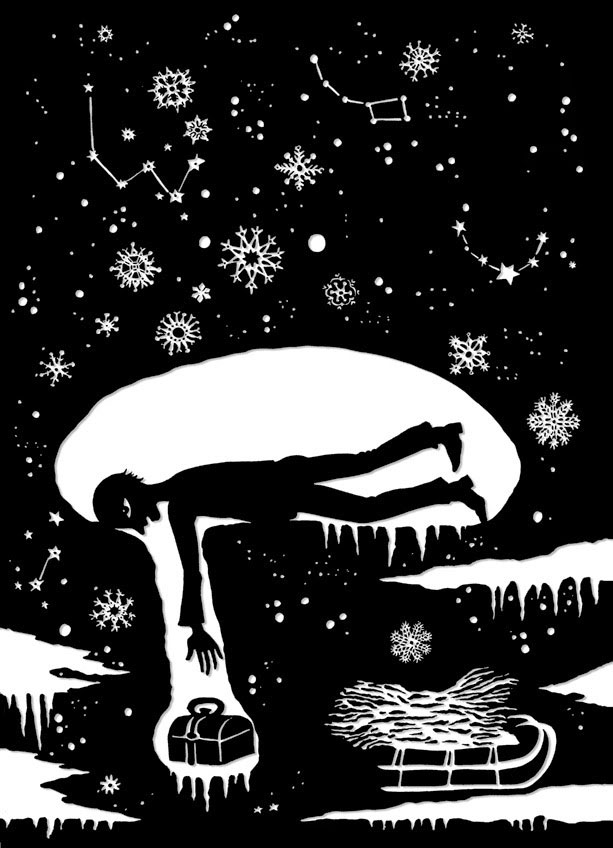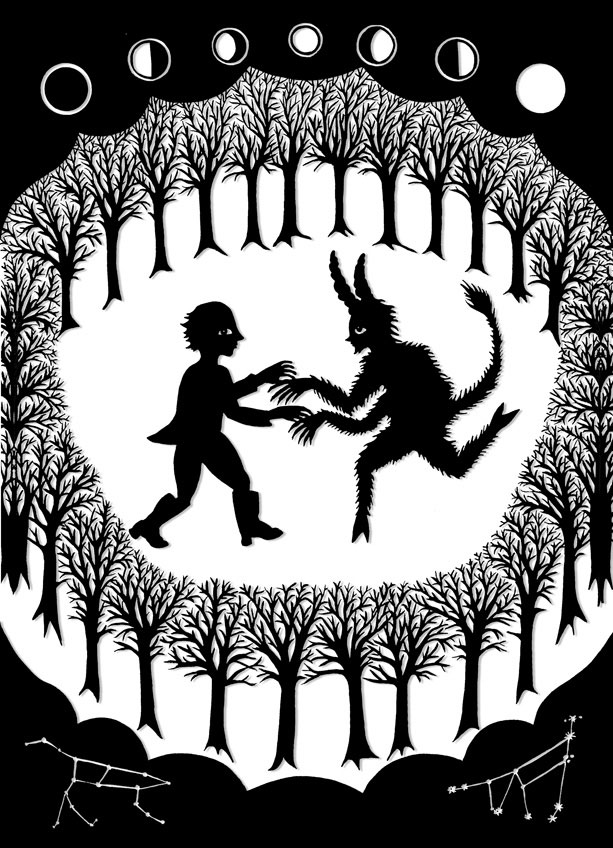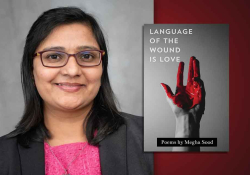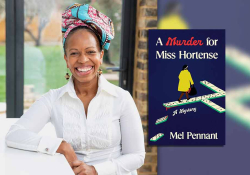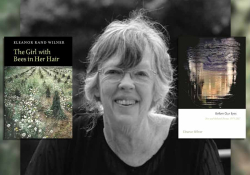The Unvarnished Tales of the Brothers Grimm: A Conversation with Jack Zipes
We know what fairy tales are. (We think.) Most of us are aware that Disney lies, even if we cannot quite remember what the original version was like. A fairy tale seems almost curtly inoffensive, like a balloon or a birthday cake. Their economical form and simple, royalty-free content make them a popular source material for film and TV adaptations. But if they comprise one of the most popular genres, it is paradoxically also one of the most neglected and misunderstood. Forthcoming Grimm Brothers–themed books like Michael Cunningham’s new tale collection, which checks in on the famous characters after their happily-ever-afters, might arouse our interest in the unaltered originals—the more original the better. Before last year, that would have presented a difficulty to English-language readers, but Jack Zipes’s recent translation of the first edition of the Grimms’ stories answered an intensifying demand for the absolute-original versions, or for something close to that, something that had not been sanitized for our moral betterment or selected to promote a kind of mass taste. Fairy tales, when rendered authentically, satisfy an often dormant, almost lupine ravenousness for a kind of primal literary experience, a temporary reunification with our narratological roots. We may have forgotten our need for that, but a good critic provokes curiosity and a healthful desire for literature that feels immediate to the point of being instinctive. Zipes is good at that kind of thing. So you shouldn’t read his books unless you’re willing to become not just intrigued but fascinated and enthralled by the art form and its specimens.
Zipes is probably most visible through his ubiquitous introductions to volumes of fairy tales, but he is not always so general. A razor-sharp theoretician in the vein of critics like Theodor Adorno, he can also be companionably plainspoken. His mind plays well with others. His slim biography of Hans Christian Andersen is, at many points, a scholarly, focused, and challenging encounter with the Danish genius of controlled wonder and dread—but that book is also an amusing and almost reassuring tale-in-itself, and he practically invented a genre of storytelling about storytellers, or writing what are convincing, profoundly well-informed, and appropriately sensitive biographies of literary forms. He believes that once we know something of the writer’s life, and his work’s context, we are less entitled to a knowing haughtiness about our literacy and more blessed with an opportunity to reread and reread again, because the text will seem to trust us more. It will admit one or two more things to us—take us into its confidence. Like Andersen, who made inanimate objects seem alive, Zipes reminds us that the people who produced these tales were not objects.
He spoke with me about how neuroscience plays into the study of folklore, about his new book (on the Sorcerer’s Apprentice motif), and about the future of folkloristics.
* * *
Michael Merriam: So, you were pretty vocal about your disdain for Kenneth Branagh’s recent Cinderella film. What did you hate about it?
Jack Zipes: There is not one original thought or idea in it. It’s an imitation of the 1950 animated film, it remains fairly sexist, it has Barbie dolls and Ken dolls as the heroes, and there’s no thought to change or explore the dynamics of sibling rivalry. The real, deeper issues are never really brought out, or there’s no desire to break away from, you know, the traditional plot in any way whatsoever. It says nothing. It has nothing to say to anybody. People may like it, but people like a lot of cotton candy, and that’s what they got, cotton candy.
MM: So what benefit does the actual, literary tale provide that the movie fails to provide?
JZ: The original tale is very brutal. The ending summarizes the fierce struggle to become the legitimate heir to a family house or a family legacy. In the Grimms’ version, the stepmother absolutely hates Cinderella, it’s not even a joke. She would like to bury her or kill her and never does. She has her daughters clip off their toes and heels to try to fit their feet into the slipper, and the blood that oozes out reveals that they’re not the right ones. . . . And the other aspect is that when Cinderella forgives them and invites them to her wedding, the doves come and peck out the eyes of the sisters. Now, this is a tale of intense hatred and intense conflict, and it’s not to be laughed at. Branagh’s film has none of that intensity. . . .
MM: And you’re saying that when we see this intensity, we recognize it as a truth, and that helps . . . ?
JZ: To deal with it. Deal with it. If you’re going to be an artist, you deal with it, as best you can, in an original manner. Explore it. Now, I think the recent Disney film Maleficent, as a variant, had that intensity. In fact, I was totally surprised; I thought I was going to have a heart attack that the Disney corporation would actually produce a film of that quality.
MM: So, you think the original, gory elements are psychologically important?
I think that a good tale has a traumatic quality to it. It shakes us, positively or negatively. It scares us or rejoices us. And my guess is that when a tale traumatizes us, to warn us or to excite us, our imagination expands.
JZ: I think that a good tale has a traumatic quality to it. It shakes us, positively or negatively. It scares us or rejoices us. And my guess is—and I’m not a scientist, as you know, I’m a dilettante—when a tale traumatizes us, to warn us or to excite us, our imagination expands. We’re animated, in positive ways. I would say that there’s a lot more work that has to be done on the questions of why and where. Why these tales stick. And where is it, in what module of our brain, that these elements are stored, so that we have instant recall? Memes, like parasites, stick in the brain.
MM: So the traumatic elements of fairy tales are like parasites, or like Internet memes?
JZ: I would say infections. We know that on the Internet, things spread virally. But folktales and fairy tales have always spread virally. . . . I’m working on a new anthology. Two years ago, I published, with Hackett Press, an 800-page anthology called The Golden Age of Folk and Fairy Tales in the Nineteenth Century. I took about eight or ten different variants by different collectors throughout Europe, like “Little Red Riding Hood,” “Sleeping Beauty,” “The Dragonslayers,” and other tales that are not that well known. The book would have been 1,500 pages if they’d published all thirty that I had prepared.
MM: Can you give us an example of a tale that exemplifies what you’ve been talking about, with neuroscience and evolutionary biology?
JZ: There’s a very popular tale called “The Sorcerer’s Apprentice.” I call the tale type “The Master and His Pupil.” It’s key to the Harry Potter series, and to many other novels that deal with magicians and apprentices. I’ve collected tales that go all the way back to the Greeks, the Romans, and the Egyptians. Again, I’m using mimetics to try to grasp how these tales are spread in different media. I’m using the philosophy of Hegel to explain the depth of the content and the substance of these books, because they deal with the conflict between master and slave that Hegel talks about in The Phenomenology of Spirit . . .
MM: Are you basically saying that Hegel’s master-slave narrative is a variation of that tale type?
JZ: Yes.
MM: I wonder, since you’re an admirer of Adorno, if you’ve found that the aphoristic chapters of Minima Moralia seem like variations of fairy tales?
JZ: Adorno wrote this book called The Negative Dialectic that really rips Hegel apart. He doesn’t demolish Hegel; it’s difficult to do that. Nevertheless, he talks about the fact that Hegel put a telos to the dialectic, where Adorno was very much influenced by Auschwitz, and there can be no poetry after Auschwitz, and so on. He is basically saying you can’t have any philosophy after Auschwitz unless it’s resistant to certain developments in our contemporary world. The entirety of Negative Dialectics is a response to Hegel. It’s brilliant and very difficult, so I try to smooth over the Adornian language to introduce his notion also of what the master-slave dialectic means.
MM: If you reinterpret these philosophers through the values we find in “The Sorcerer’s Apprentice,” who’s right?
JZ: I’m clearly on Adorno’s side in the philosophical argument. But what’s fascinating about “The Sorcerer’s Apprentice” is that it opens up the question and never really answers it. The two strands in that tale type are opposed to each other. Neither one is totally correct. One strand is very authoritarian, and I would tend to dismiss it. The book is going to be large, at least five hundred pages or more, because I’ve translated all these tales and I want to include them to show how these different cultures approach the conflict between master and slave.
MM: So you are of the school that traces the tales back to very ancient sources. . . .
JZ: Many millions of tales were never collected. We don’t have knowledge of them, we can only assume certain things. The Grimms tried to foster certain things that they couldn’t accomplish themselves: taking tales right from the mouth, stenographic work, but they did very little of that after the second edition of 1819. They realized there is no Ur-version, no ultimate first.
I have friends in England who are phylogenetic anthropologists doing some fascinating work trying to trace the tales as far back as we can go. This is some new science. I think the Grimms’ group became much more sophisticated and cosmopolitan in their approach to folk- and fairy tales, and if you trace one edition through another, the first through the seventh, you can see they are very careful to try to find a better variant than the one they had before.
MM: Are the different editions quite distinct? To you they must be, you’ve been studying them so closely.
JZ: Yeah, they are very different books. Not totally different, but the selection is different. Many of the tales are shorter in the first edition. They’re more blunt. Rapunzel gets pregnant in the tower with the prince, there’s a little hanky-panky going on there. There are vivid depictions of children slitting each other’s throats, where a mother wants to eat her daughters because they are suffering from hunger, and she says, “Listen, I’ve gotta eat you, otherwise I’ll die.” The mothers in “Snow White” and in “Hansel and Gretel” are the biological mothers in the first edition, but they changed them in later editions to make them stepmothers. I wouldn’t call them monumental changes, but the tales are closer to the oral tradition. This is because Wilhelm really wanted, over the years, to make them into artful tales, which he did. But they’re not that way in the first edition. They’re rough.
MM: So you see a major change in the intermediate volumes?
JZ: The third edition is very interesting: it’s growing. The first had 166, the seventh has 210. By the way, ten religious tales come at the end in the seventh edition, but there is no religion whatsoever in the first edition, nothing didactic in the first edition. The third edition already shows an amazingly different cosmopolitan awareness. . . . I believe Wilhelm actually wrote a literary fairy tale called “Snow White and Rose Red.” That’s his tale, a literary tale that he included in the third edition. So you can see some big changes form the first.
MM: Now we all conflate the brothers, we just say “The Brothers Grimm.” How are they distinct?
JZ: There are major differences. Jacob was the older one, and they were the first two born and there were three other brothers and a sister. Their father died when they were ten and eleven. Jacob was expected to become the father in his teenage years. Jacob was the leader of the family. Now, Wilhelm was also rather brilliant, but it was Jacob who wrote Grimm’s Law, a law in linguistics named after him involving a consonant shift that is extremely important for understanding the evolution of language. He wrote thirty or forty books. Neither of them thought they would be famous today for their fairy tales. They created the first German dictionary in 1840. They never finished it because each volume was something like a thousand pages. They did get up to the letter F, and it took another hundred years for scholars to finish their work. They took literature of all kinds seriously. They wrote voraciously, they taught, they translated Irish folktales, they translated old Nordic sagas.
MM: So how did all this snowball? You’re the fairy tale guy now, you introduce just about every translation or story-treasury that comes out.
JZ: [Laughs warmly] That’s an exaggeration, but I do a lot, yes. I know the Grimms’ tales quite well, but my original focus was on the literary folktale by the great writers like ETA Hoffmann. I’m an autodidact or a dilettante when it comes to folklore. I never studied it, I never took courses in folklore. . . .
MM: What was your first published article on the Grimms, do you remember?
JZ: In 1979 I published Breaking the Magic Spell: Radical Studies of Folktales and Fairy Tales. I was a theoretician for the most part. That book reveals how I tried to apply the theory of the Frankfurt School and critical theory to the study of folklore and literature. It caused a great deal of controversy among folklorists. I was attacked for being too Marxist in the Journal of American Folklore, and in fact I did write a response. The book came out in 1979, and I began sort of defending my intervention in the sacred field of folklore in 1980 or 1981.
MM: That sounds like it was right around the time Richard Dorson died.
JZ: That’s right, yes. I sent it to him, and he acknowledged it politely, but I think it disturbed him, too. I never met Richard Dorson. I admire him a great deal; I think he’s contributed a great deal to the study of folklore in America. He was a conservative folklorist. My central influence was in the Frankfurt School, and in particular the work of Theodor Adorno.
MM: Why did other folklorists feel so much hostility toward your Marxist bent?
JZ: There was a very structuralist new criticism [New Criticism is basically a formalist school of the 1950s], a tendency not to ask nitty-gritty questions about the tales: why they’re still relevant, why they’re still significant today, if they are significant. . . . Very few studies dealt with the adaptations into films and operas and such. I was among the first to start doing that, and it jostled some people because it raised some questions for them. One other tendency at that time was the Jungian and the Freudian approach. Bruno Bettelheim was a Freudian; The Uses of Enchantment caused a big splash.
MM: So Bettelheim is one of your ideological opponents—
JZ: Well, you know, he was a plagiarist. He knew nothing. Everything that he said about fairy tales and children was from a book from 1944, and he used it sometimes verbatim. He was a very authoritarian personality, and he lied about his degrees—he never studied psychology.
MM: He was enormously famous. Even Into the Woods was based on his theories, ideas like the dual nature of motherhood, the kindhearted biological mother versus the wicked stepmother, and so on. I don’t think his influence is ever going to go away, do you?
JZ: I think it’s died down a great deal, like the influence of the whole Freudian school, and of Freud himself (whom I admire, by the way). Scientifically, we know much more about the brain than Freud ever knew. Freud’s theories about hysteria and women are so distasteful and wrong. There are many other recent things in both Freud and Jung that may cater to the general public, but the general public in contemporary America is totally misinformed by the media. Nobody realizes how pernicious Bettelheim’s theories are. This is not to blame Freud, it’s Bettelheim. The same applies to Jung, whose theories have no foundation whatsoever.
MM: Maurice Sendak met Bruno Bettelheim when they were both receiving honorary degrees. Bettelheim, evidently, told Sendak how much he hated Where the Wild Things Are, and how bad it was for children—and then Bettelheim killed himself.
JZ: Bruno Bettelheim was a liar through most of his life, and who knows? Maybe he couldn’t live with himself anymore. I feel sorry for him. But he was a very dislikable person, and a fraud as well.
MM: Is it just that the car is being put before the horse in psychology? Maybe fairy tales could guide us to a richer psychological practice rather than the other way around?
People impose theory onto the fairy tales, but we should look at fairy tales in their historical and social context. They don’t come out of thin air; they are produced at a certain time in history, and they reflect a society’s values and customs and processes.
JZ: That’s very well put. I think so, yes. People impose theory onto the fairy tales, but we should look at fairy tales in their historical and social context. They don’t come out of thin air; they are produced at a certain time in history, and they reflect a society’s values and customs and processes. I want to learn how and why we retain tales. I’m encouraging many young scholars who are interested in folk- and fairy tales also to be much more open to the sciences.
MM: Why do you think it’s the German tales specifically that have such strong purchase in American culture today?
JZ: There are rivals. Hans Christian Andersen’s tales are very popular as well, and so is the small collection of Charles Perrault’s. There are only eight Perrault tales, but they’re among the most popular in the world. People confuse them. The Grimms’ collection really stamped the nineteenth century. There were seven different editions, and they were rapidly translated into many other languages. The Grimms were pioneers. Theirs was the first major literary translation of oral and literary work—it’s a combination, they collected both. But Wilhelm, the younger brother, was in charge of all the editing after 1819, of the latter six editions, which were made, thanks to him, much more artful and more poetic.
MM: With the German tales in particular, there’s this dual instinct in audiences today: on the one hand, we want to sanitize them, as Disney does; on the other hand, we’re always rumor-mongering about the goriness of the original tale.
JZ: That’s a very good point. I just published in November the Original Folk and Fairy Tales of the Brothers Grimm.
MM: That’s the first time we’ve had the first edition in English, right?
JZ: That’s right, and do you know how many copies it’s sold already?
MM: No.
JZ: Fifty thousand. That wasn’t planned. I never dreamed that the book would take off.
MM: So what accounts for that, do you think?
JZ: We get these pansy Disney versions that are very sanitized. People sense that the Disney films and other mediocre fairy-tale films are pale shadows of the original. Where is the original? I think that when my book came out, people interested in fairy tales said, “Well, now we’re going to really find out what these tales were about, and we don’t have to put up with this anymore,” meaning contemporary Disney directors, like Kenneth Branagh, whose Cinderella is a mockery.
MM: I believe it was Wilhelm who was obsessed with Beowulf.
JZ; They were obsessed with the whole Nordic tradition. They read something like forty different languages. It was just astonishing how brilliant they were and how productive they were. There was a great deal of turmoil in their lives. Wilhelm was pretty wild, and the other brother had other difficulties: Jacob never married. They always were sitting right across from each other. There’s no doubt—I know their letters very well—that Wilhelm admired Jacob and loved him, and at one point, when they were by themselves in their teenage years, they made a pact. They would never ever separate. And when Wilhelm married Dorothea Wilde, one of their informants and sources for tales, Jacob moved in and lived with them.
MM: Who died first?
JZ: The younger one. Wilhelm had asthma and lung problems, and he died in 1859. And Jacob died in 1863. They were born in 1785 and 1786.
MM: So, Jacob is the careful scholar and Wilhelm is the poetic genius.
JZ: Yeah, but Wilhelm was no slouch. Of the two, Jacob was the more theoretically sophisticated. Wilhelm was more outgoing. Nobody knows about the private life of Jacob. There have been novels written about both of them, and films made about them; most of them are ridiculous, but the biographical work has been very thorough. We really have no sense that Jacob was either heterosexual or homosexual.
MM: What does your gut tell you?
JZ: I think he was a workaholic.
MM: If he was researching in thirty languages, there wouldn’t be time for much else.
JZ: Right.
MM: So, where is folkloristics going?
JZ: There’s a chapter in Grimm Legacies about superheroes, and how they made their way through the world. It goes all the way back to Jason and the Golden Fleece and the Argonautica. If I live that long, I might come back to, and develop, that chapter, because it is so significant in trying to understand how comics came into being, how all of these stories that involve these exceptional figures are called upon to cooperate and to enable people to overcome evil forces.
MM: Where is the most crucial collecting work yet to be done, do you think?
JZ: There’s still areas in South America and Australia. Even the Somalis—there are thirty thousand who live in Minneapolis now, which is the second largest population of them—they didn’t even have a literary language until the last twenty years or so. There are many areas where orality is the way the tales survive. . . . I’ve discovered French Canadian oral tales and I’ve come across two collections, one from 1916 and one from 1937. My guess is, there are towns in Missouri and Louisiana, and in some parts of Quebec, where people are still telling tales. Some of the storytellers might still be alive. There’s work to be done even in the north of Minnesota, I would say, or the Dakotas. Go to a town that has been fairly stable, go into a bar, and spend a year there. You’ll probably come away with a book of tales, exaggerations, embellishments, and so on. So folklorists still have a mission, let me say. They just have to cross some borders.
May 2015
